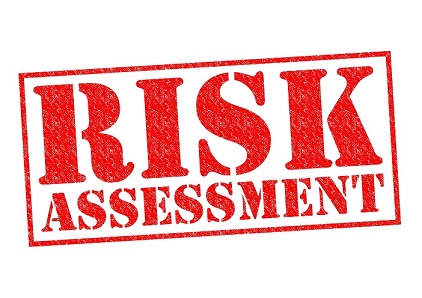A risk assessment is done to examine the potential dangerous factors in your work to reduce the risk of accidents and incidents. Something as simple as an open cupboard or a misplaced equipment can cause a potential injury that could otherwise be prevented. Therefore, risk assessment is necessary in order to ensure the safety of the employees.
5 Steps of Risk Assessment

Step 1: Recognize Hazards
- Have a look around your workplace, and watch the employees while they perform their tasks.
- Ask your employees what they think can possibly cause them some harm and whether they have had any inconvenience with something related to their work environment. Since they are the ones using it every day, your employees are the best people to tell you if something is wrong.
- Make sure to review the manufacturer’s instruction for any equipment or supplies, this way you can be aware of any additional risk that you may have ignored before.
- If you have access to the health record of previous employees during their work here, it will be easier to relate some possible injuries or diseases to a certain type of activity or hazardous situation.
Step 2: Identify Who Is at Risk
In 5 steps of risk assessment, the second step is to identify who is at risk. Find out who is likely to be harmed by each hazard. So it is helpful to identify your employees into different groups according to the task they perform. Identify how your employees may be harmed in each group.
- Sometimes, you may need to individualize each case. For instance, for a pregnant woman or someone who is disabled or suffers from a certain medical condition, extra precautions must be taken.
- If you share your workplace or your workplace is located in a public area, then think about how your activities can harm external people and make sure to avoid any kind of risk.
Step 3: Evaluate Risks and Take Precautions
The law requires you to do everything you can to avoid any kind of preventable injury. You can follow these recommendations that will help you control some risks:
- Evaluate if you can try something less harmful; for instance, changing the chemicals you are using to less hazardous ones.
- Restrict contact with the hazard, such as putting a fence to avoid someone accidentally touching an electric cabinet or cable.
- Instruct your workers to use protective gear properly, like auditive protectors, gloves, goggles, etc. Make sure welfare facilities are always available, for example, a first aid facility for immediate help.
This is one of the 5 steps of risk assessment. Actually, safety measures won't cost you a lot. For example, a mirror placed on a blind corner can prevent many vehicle accidents which will cost you more if these happen.
Step 4: Implant Your Findings
After doing the assessment, you should put the results into practice.
- You do not need to do everything at once, especially if the business is new. Instead, make progressive changes. Some things are cheap and easy to fix while others will take more time and money.
- So, what you need to do is prioritize which ones are the most important ones according to the potential risks they have on employees, and start working based on that.
- Setting short-term, medium-term and long-term goals will help you determine the order of each task.
Step 5: Review Your Risk Assessment
As the last step of these 5 steps of risk assessment, reviewing and updating is of great importance.
- Nearly no workplaces will stay the same, and new machinery, supplies and chemicals will be bought. Therefore, doing constant reviews of the safety precautions is recommended. Do reviews at least once a year.
- Examine your risk assessment and see if there are any changes, if there are improvements you can make, if your employees have new recommendations, and if you have learned more from new experiences. Then update your risk assessment.
- If significant changes happened, update your risk assessment immediately if necessary. It is best if you can consider the risk assessment before you make any big changes.
